The post What You Need to Know Renovating Your Home appeared first on Bridget Puszka Architect.
]]>Deprecated: Function get_magic_quotes_gpc() is deprecated in /home1/bparchitects/public_html/wp-includes/formatting.php on line 4826
Deprecated: Function get_magic_quotes_gpc() is deprecated in /home1/bparchitects/public_html/wp-includes/formatting.php on line 4826
Deprecated: Function get_magic_quotes_gpc() is deprecated in /home1/bparchitects/public_html/wp-includes/formatting.php on line 4826
Deprecated: Function get_magic_quotes_gpc() is deprecated in /home1/bparchitects/public_html/wp-includes/formatting.php on line 4826
data-elementor-type="post" data-elementor-id="816" class="elementor elementor-816" data-elementor-settings="[]">
This article covers the critical points you need to know when you are renovating your home. Why are they critical? They are critical as they can protect you from having a renovation disaster.
You might be renovating your home, and you are not sure if you are doing it right.
You might not need a building permit. So you will not have a building surveyor checking your drawings or inspect your home.
You could be organizing tradespeople and project managing your renovation. So how do you know that the tradesperson is building or renovating your home according to code?
In this article, I’ll be talking about what you need to know about Building Regulations. And how they apply when you are renovating your home.
I’ll also explain what a soil test is and if you need a soil test when renovating your home.
Now before you say to yourself, why do I have to know about Building Regulations? I’m hiring a builder to do my renovation work. They should know all about the building rules. Take a few minutes to watch Tom from Vancouver in the video below.
Tom is a building inspector, and in the video, he is inspecting a house under construction. And he does find a few unusual construction techniques on site.
Deprecated: Function get_magic_quotes_gpc() is deprecated in /home1/bparchitects/public_html/wp-includes/formatting.php on line 4826
Why You Have to Inspect Your Home During Construction
So don’t think this would only happen in Vancouver.
My father recently had a shower fit-out in his powder room for his house in Victoria, Australia. He did not need a building permit for his shower fit-out.
All the same, he did need a registered builder to do the work for his new shower room as the cost of the shower fit-out was more than $5,000. You can find out if you need permits when renovating your home in the article on ‘Permits for Your Renovation’.
For my father’s shower fit-out, I provided the drawings for the builder. And I specified diamond grip grab rails along with a shower rail and additional wall reinforcement. Once the builder had started work on the shower fit-out, I had to ask for the installation of the items specified. Otherwise, other products would have installed instead.
It is surprising what happens when it comes to constructing a house. The drawings for my father’s shower showed the installation of a stepless metal shower tray. The stepless shower tray makes the floor waterproof. Instead of the stepless shower tray, the builder decided to install moisture resistant particleboard.
Acceptable Resolution with the builder
Moisture resistant does not mean waterproof. And a shower has to be waterproof.
So to get my father’s shower finished by the builder, we agreed to keep the particleboard floor instead of the shower tray on the condition that the builder waterproofed the shower floor and installed a removable floor waste. The vinyl floor then ran into the removable waste and made the floor watertight.
In this particular case, an acceptable solution had to be worked out with the builder, rather than remove the shower floor and install the stepless metal shower tray. The shower floor had to be made waterproof.
If you leave the inspection to when the builder has completed the work, you will not know what is underneath the surface. Below is an image of my father’s shower. You wouldn’t know what is beneath the vinyl floor or the wall tiles.
You don’t know if waterproof wall linings are on the walls behind the tiles; if your walls are impervious to water.
You can find out more water-proofing a shower in my article on All You Need to Know About Permits for Your Renovation.
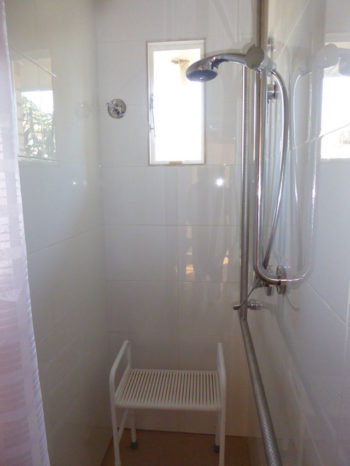
Will Your Builder Let You On to Your Home Site?
With the advent of the Occupational Health and Safety (OHS), you need a ‘red card’. The ‘red card’ is now known as the ‘White Card’.
Having either of these cards means that you have completed the basic OHS induction training for the construction industry. And you need to have one of these cards before going onto a Victorian construction site.
So your builder can stop you from coming on to your home site when renovating your home because you don’t hold a ‘White Card’.
Before you sign up with a builder to renovate your home, you want to check with the builder that they will let you come on to your home site during construction.
So that you can see the building of your home renovation; before the fixtures and finishes are all in place. And you don’t get locked out from your home site when the builder is renovating your home.

When Your Builder is Not a Builder
Now I want to talk about one of the worse things that can happen when you are renovating your home; when it turns out that your builder is not a builder.
One thing you need to be careful about is that if you hire a builder, they’re qualified to do the work. Same goes for tradespersons.
You may take for granted that the builder is a builder. Or the electrician is a qualified electrician.
Well, you might want to take some extra precautions when it comes to you selecting a builder for your renovation.
At least three people that I know have employed a ‘builder’ to do their home renovation only to find out that the person didn’t hold a builders license.
As the homeowner, you end up in a bad situation that can become a renovation disaster.
5 Steps to Find out If Your Builder Is a Registered Builder
How can a builder not be a builder? Well, as mentioned, the person who said that they were a builder was using someone else’s building license.
It can happen when a registered builder joins in partnership with a business partner. And the builder’s business partner is not a registered builder. And although the partner is not a registered builder, they use their partner’s building license.
There are 5 Steps you should do if you are thinking of using a builder for your home renovation. They are essential to you to reduce the risk of finding yourself in a disastrous home renovation situation.
You can check if a person is a registered builder on the Victorian Building Authority’s (VBA) website. You can find out if the builder is on the Find a Designated Building Practitioner page on the VBA website.
The Practitioner Disciplinary Register is also on the VBA website. The Register allows you to check if there has been any misconduct by that person.
And you can check if the builder can get domestic building insurance on the Victorian Managed Insurance Authority website.
However, you might not get any red flags coming up when you check these Registers and websites. There might not be any recorded issues associated with the builder.
The reason why you might not find any issues on these Registers is that you are checking the builder with the registered builder’s licence and not the business partner. And it might be the unregistered builder who is renovating your home .
So I recommend that you do all these checks to see if you can find anything that raises any questions.
Step 4. Google Search Builder's Name
And also, I suggest that you do a google search for the builder’s name. Not the building company’s name. See if there has been any bad review or comments, understanding that anyone can post a comment on the internet.
Step 5. Ask for Referral Contacts for Past Building Work and Ring Them
And I always say to my clients to get referrals from the builders they are considering using. And to ring the homeowner to find out how out about their home renovation. If there were any issues and if the homeowner is happy with the quality of the building work.
If there were any problems with the home owner’s renovation, did the builder come back and fix them.
What Can Go Wrong Renovating Your Home?
So it is worth your while to do your due diligence and check the credentials and the referrals for the builder you think you will use to renovate your home.
Do the 5 Steps as listed above, knowing that you have done everything at the time to reduce your risk to unwittingly using an unlicensed builder.
You could end up with a half-demolished house and a ‘builder’ that has disappeared – and then trying to find a builder that will step in and take over your project and someone else’s building work.
Not many builders will want to take on the responsibility for another builder’s work. To find out that they have to come back and rectify faulty work at a later stage.
Or you might move out of your home so that the builder can start work after they told you that the building permits were approved. Only to find out that they had not been approved and were months away from being approved.
The ‘builder’ could complete renovating your home. And you may have made the final payment for the building work. Then you find that there are lots of issues that need fixing. When you try and contact the ‘builder’ to come back to fix the problems you have with your home renovation, they are not available or helpful.
It then becomes a big problem for you to try and have the ‘builder’ rectify the faulty building work.
What Your Builder Must Do Before Renovating Your Home
The builder you choose to build your renovation must have domestic building insurance. This insurance applies for work more than $16,000 and covers you if the builder disappears or becomes insolvent.
Checking if your builder is eligible for domestic building insurance is the third Step in checking on the builder’s registration, as listed above.
You must get a ‘Certificate of Currency’ for this insurance from the builder. You should get this ‘Certificate of Currency’ before the builder takes a deposit and start work.
The builder has to be registered with the VBA to carry out work more than $10,000. Checking your builder registration with the VBA is the second Step in checking your builder’s record, as listed above.
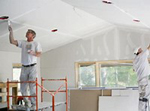
There are exception’s to requiring registration, and this is for building work that involves only one of the following:
- Plastering
- Tiling (wall and floor)
- Glazing
- Insulating
- Painting
- Installing floor coverings attaching external fixtures (awnings, security screens, insect screens and balustrades)
- Building a chain wire fence around a tennis court
- Erecting a mast, pole, antenna, aerial or similar structure
There are special requirements for plumbers, gas-fitters, drainers and electricians.
Building Regulations When Renovating Your Home

The Building Regulations are there to make buildings safe. They stipulate the minimum requirements for construction so that your home is safe to use.
The Building Regulations include guidelines to carry out structural work safely. And advice on how to avoid potential damage to your home or your neighbours’ homes.
The Building Regulations exist so that building your home renovation is done the right way.
For example, if there is a vapour barrier under your slab. Installing this barrier is done the right way and, the material doesn’t have holes through it. And that the building material used for this barrier is fit for creating a vapour barrier.

Soil Tests Renovating Your Home
Each house will have a different type of soil types.
A soil test will tell you what sort of soil you have on your home site. You need a soil test if you are building a new addition to your home. Or if you have to replace some of your footings.
If you need a building permit, you have to provide the building surveyor with a soil test.
The engineer uses a soil test report to work out your house foundations. They use the information from the soil test to specify the right type of footing or slab reinforcement and strength for the foundations of your house.
There are four main soil types. They are:
- Sand /rock with no ground movement from moisture
- Clay
- Filled
- Soft
Also, within the clay soil types, there are four categories of clay. The clay soil types range from slightly reactive to extremely reactive clay.
What If You Don’t Need a Building Permit?
If you need a building permit, a building surveyor will check your documents. The building surveyor checks your drawings and reports to make sure that your renovation complies with the Building Regulations.
And if your documents comply with the building regulations and standards, the building surveyor will approve your building permit.
So how can you make your home comply with Building Regulations if you don’t need a building permit?
If you are renovating your home, you need to have the new building work follow the regulations. Your home renovation has to comply if you are doing the work yourself or if you have a builder do the work for you.
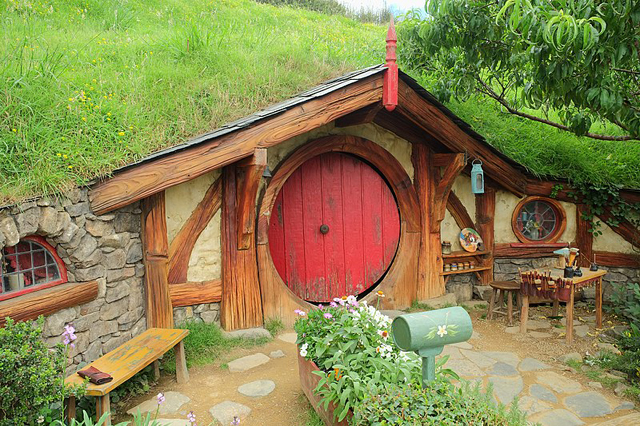
What Is the National Construction Code of Australia (NCC)?
The National Construction Code of Australia (NCC) covers the design and technical aspects of building, and plumbing.
The NCC for housing is 599 pages long. It includes acceptable levels for safety, health, amenity, accessibility and sustainability of houses for both technical design and construction requirements.
Different states of Australia have different requirements. So it is always worth checking with your local Council’s building surveyor if your home renovation needs particular requirements to meet compliance with the NCC.
The NCC covers the following in building houses:
- Structure
- Damp and weatherproofing
- Fire safety
- Health and amenity
- Safe movement and access
- Ancillary provisions and additional construction requirements
- Energy efficiency
And if the building is suitable and fit for the intended purpose
Such as, if the termite protection you used on your house is suitable and that the termite protection material is not eaten by termites.
The NCC includes the use of materials and products and forms of construction and design. So that your house is constructed using suitable materials.
It includes a section on fire resistance of building materials. You don’t want to renovate and find you have a fire hazard of a home.
And you don’t want to do something where there is no resistance to the spread of the fire, whether that be the spread of flames or smoke from the fire
House Structure When Renovating Your Home

The structure of your home needs to be stable so that it won’t collapse. And your house needs to stand up to the wind pressures, earthquake, ground movement, rainwater and the sun and the like.
And the building work that you do on your home needs to be structurally robust. You don’t want to remove any of the structural supports of your home, thinking that your roof will hold itself up.
Before you remove a wall, you need to look in the roof space and see if any posts or props are supporting the roof and sitting on top of this wall. If the wall is supporting the roof, it is a load bearing wall. And if you remove this wall, your roof will collapse.
Glass Safety Renovating Your Home
Your windows and glass doors need to be safe so that people will not walk into them. And if someone happens to run into your glass door, and the glass breaks, the person is not injured. Or better still, the glass is strong enough not to break on impact.
You can choose to have laminated glass which will hold together if the glass shatters. The plastic film between the glass panes will hold the broken glass together. It is the right choice of glass if you want to secure the front entry windows of your home.
Toughened glass is also known as tempered glass. It is a safety glass that has been treated to increase its strength. Large windows and sliding doors will have toughened glass.
Floods and Renovating Your Home
If your house is at risk of floods, your house structure has to stand up to the pressure from the flood waters.
Termites and Your Home
Every home, even if it is not in a termite designated area, should be designed with a termite management plan in place.
Protect Your Home from Water and Moisture Damage
That you won’t get any water or moisture entering your home from the exterior
That there will not be an accumulation of moisture from inside your home. Such as condensation or from your kitchen when cooking. And the wet rooms in your house, such as your bathroom and laundry, will not accumulate moisture.
That your stormwater doesn’t drain into your neighbour’s property.
And that your home has the right amount of weatherproofing and damp roof course. And you don’t have rising damp as this will lead to mould, and cause your timber house frame to rot. If there is heavy rain, that the stormwater drains from your house can drain water off your home site.
Your roof is the right design and is capable of getting rid of rain. There is weatherproofing around your windows and doors so that you don’t get water on the inside of your home.
Design Your Home as a Safe Place
You have the facilities to allow you to have sufficient personal hygiene. And if you happen to faint in your toilet someone can get in to help you by installing removable hinges on the toilet door.
You can use your laundry and your kitchen and move around your home safely.
And you have safe gradients on walking surfaces to your home and slip-resistant surfaces where required.
That your stairs have handrails and Landings. And you install barriers when there is a possibility that you could fall more than 1m.
Fire Safety Renovating Your Home

Your house exits are clear, and your home design allows you to get out of your home in case of fire. And you have smoke detectors that work.
That your home and home renovations don’t put your neighbour’s house at risk of spread of fire.
Room Heights and Renovating Your Home
That your room heights are adequate.
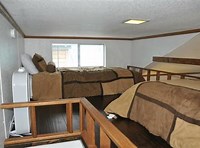
Lighting
You have adequate natural light and artificial lighting levels in your house.
Ventilation
That you have enough fresh air entering your home. Allowing for fresh air is particularly important as we make our homes more energy efficient and more airtight.
Noise
And that you won’t have problems with noise from adjoining homes.
Swimming Pools Are Safe
People are safeguarded from injury or drowning in your swimming pools with fencing, gates and barriers.
Protect Your Home from Bushfire
That your home design is detailed to the bushfire attack level appropriate for your location to protect your home from bushfires.
Energy Efficient Home
Different Regulations for Different States of Australia
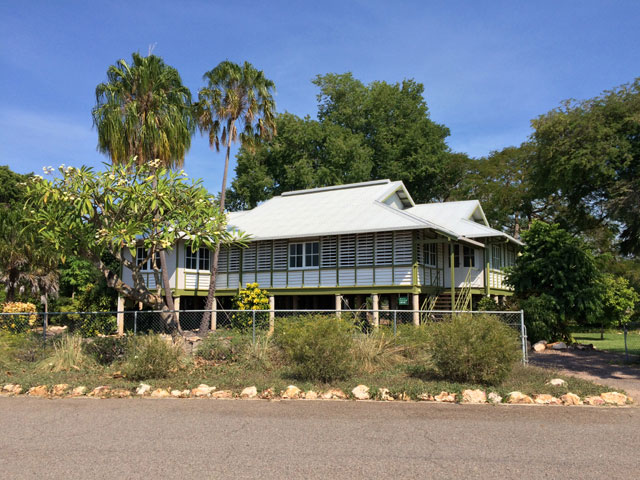
Depending on where you are in Australia, your home can be in a different climate zone. And you can experience different wind conditions.
For example, Darwin will be a tropical climate and exposed to cyclonic winds, whereas Melbourne is a temperate climate. And houses, other buildings and the landscape may surround your home, protecting it from the wind.
So different climates require different types of house construction. So the Building Regulations do vary depending on the location of your house.
You can check what requirements you need for your home renovation with your Council’s building surveyor. Or have an architect work with you so that you have your home designed the right way for you.
What You Need to Know to Have a Fantastic Renovated Home
With a poor home design and an excellent builder to build it, you will still end up with a lousy renovation.
Likewise, a good design and an inadequate builder will end up with a lousy home renovation.
You want to have an excellent design for your home renovation and a good builder. You want the right team for your home renovation — the best design and an excellent builder to build your home. Then you will end up with a fantastic house that you will love, and your friends will envy.
Happy Renovating!
Bridget Puszka
Smartrenovators.com.au
Bridget Puszka designs beautiful, healthy, sustainable luxury homes. You can find out more about her architect designed Award-winning houses.
And learn what her clients have said about their homes in their testimonials.
The post What You Need to Know Renovating Your Home appeared first on Bridget Puszka Architect.
]]>The post All You Need to Know About Permits for Your Renovation appeared first on Bridget Puszka Architect.
]]>Deprecated: Function get_magic_quotes_gpc() is deprecated in /home1/bparchitects/public_html/wp-includes/formatting.php on line 4826
data-elementor-type="post" data-elementor-id="745" class="elementor elementor-745" data-elementor-settings="[]">
Before you start renovating your home, you need to find out if you need permits for your renovation.
Do Homeowners Need Permits?
Do I Need a Permit to Renovate My House?
Why do you need permits for your renovation? Well, the short answer is to avoid fines.
If you need permits for your renovation, and you don’t get them, this can lead to a whole lot of stress for you.
The Stress of Not Having Permits for Your Renovation
So why do you need to find out if you need permits?
One very good reason is that it could get expensive if you start work and then you find out that you need to get permits approved.
First, sorting out your permits can hold up any tradespeople you have on site and end up costing you more.
Second, you can face a penalty fee up to $80,500 and end up in the magistrate’s court arguing your case. 80% of other people in a similar situation get fined.
As well as having to remove the illegal building works. The Council has the authority to have you to demolish what you have built without a permit.
Deprecated: Function get_magic_quotes_gpc() is deprecated in /home1/bparchitects/public_html/wp-includes/formatting.php on line 4826
Or the Council may ask you to prove that what you have built complies with the building code and the planning act.
You want to get all the paperwork in place to avoid this type of stress.
Which this leads on to the question of what kind of renovations require a permit?
And more so, what permits do I need for my home renovation?
If you know that you don’t need a planning permit, you can go straight to the building permit section below.
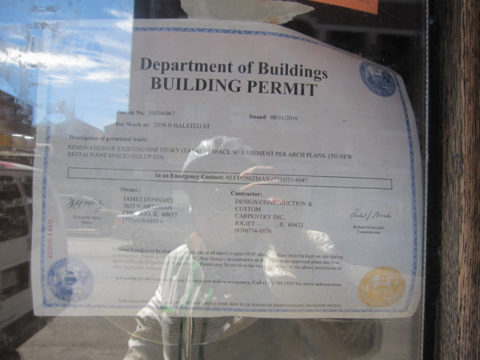
What Permits Do I Need for My Home Renovation?
There are two permit applications that you need to be aware of when renovating.
1. You may need a planning permit.
2. And you may need a building permit.
A simple way to find out if you need either permit is to ring your local Council. You can ask the town planner in the Planning Department if you need a planning permit.
And you can speak to the building surveyor in the building department. They will be able to tell you if you need building permits for your renovation.
What Governs a Planning Permit?
The planning act sets out the rules for land use.
A Planning Permit is a legal document. And having a planning permit approved means that you have permission for what you want to do with your house.
In planning terms, you have approval for your proposed use and development of your land.
When Do You Need Town Planning Permits for Your Renovation?

Your Title for your house and land may have conditions linked to it.
If you have certain conditions, before you start you have to get planning permits for your renovation.
First, you apply for approval to do what you want with your home.
And then you will either get, or not get, granted permission to do the changes you want to make to your house.
If you have any of the following, you will need a Planning Permit:
- Your Property Title has Overlays
- Your house is in a bushfire area
- The Zoning for your home site means that you need a Planning Permit
- Your home site area is less than 500m2
- You plan to build more than one house on your home site
If you are wondering what a Title that has Overlays is, I’ve explained further down in this article.
If your house and Title falls under any of these conditions, you will have to apply for a planning permit.
Where Do You Get a Town Planning Permit?
Town planning approval comes from your Council.
Every Council has a planning department. And your Council employs town planners to manage the planning permits in your area.
You can arrange to meet with your local Planner and discuss with them what you want to do to your home. They will be able to tell you if they will approve or disapprove what you want to do to your home.
Not everyone needs a planning permit. So, you may or may not need a Planning Permit to develop your land.
But if you do, you need to have your permits approved before you start building work.
And don’t think nobody will notice. Town planners keep their eyes open for new building work in their area. And your Council has access to aerial photography to check on illegal building works.
What Is an Overlay?
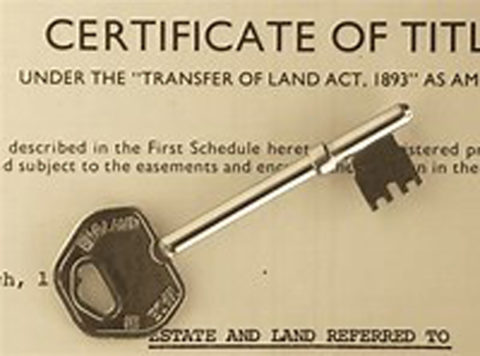
Overlays on a title mean that there are specific conditions tagged to your home site. Such as a Special Building Overlay which means that your home is in a flood-prone area. And you have to build above a set height to be above the 100-year flood level.
Or your home may be a heritage home and has a Heritage Building Overlay on your home site.
With a Heritage Overlay, you have specific conditions attached to your house Title.
For example, you are only allowed to paint your house in a particular colour. Or you can’t change the front of your home. You may find that your front fence is also protected so you can’t make any changes to your front fence.
You may have to hide any new addition to your home so you can’t see it from the street.
If you have a heritage house, you can expect to have set conditions on your Title.
An Overlay on a Title is different from a Covenant or a Caveat on a Title. You can read what are Covenants and a Caveats on the Victorian Property and Titles website.
What Do You Need for a Town Planning Permit Application?
To get a planning permit, you have to provide documents to the Council. These are drawings and a report along with the application forms and fees. And a recent copy of your Title.
Planning drawings need to show the neighbourhood character of your street.
And you need to have plans of your existing house, including floor plans, elevations and site plan. These drawings will tell your town planner what your home is like before you renovate.
You also give the planner drawings showing your new renovation plans so that your town planner understands what you want to do.
Your planning drawings need to be at a scale and have to include dimensions. They have to show all the details of your home and any other structures.
The Planner will see how your renovated house compares with your neighbours’ homes. And the area in general.
Your Planner will then decide whether they will approve permits for your renovation. And grant you a town planning permit.
A Planning Permit Is Not a Building Permit.
If you need a Planning Permit, you need this approved before you can get a Building Permit.
What Is a Building Permit?
So you have read about planning permits. So what then is a Building Permit?
A Building Permit is approval for you or your builder/contractor to build what you want to build. It provides consent for you so that you can start your renovation.
Once approved, a registered building surveyor will issue your building permit.
A building permit means your documents for your renovation meets compliance.
Compliance is with the building regulations and Australian standards. Including the Building Code of Australia/ National Construction Code and the Building Act.
Building regulations set out the rules for building. These are the minimum requirements for building so that your building is safe to use.
The regulations cover the following for both new buildings and new additions:
- Safety and health
- Amenity and accessibility
- Sustainability
- Construction
- Performance and livability
How Long Does It Take to Get a Building Permit?
If the Building surveyor has all the information they need, then a building permit can be issued in 1 to two weeks.
Your renovation would have to comply with the building regulations.
Often a building surveyor will request additional information and drawings.
So they are sure your home renovation meets compliance. So building permit approval can take longer than 1 or two weeks.
When Do You Need a Building Permit?
You don’t always need a building permit. For example, in Victoria, if you wanted to fit out a shower room, and there are no structural changes, you don’t need a building permit.
Although you don’t need a permit, if your bathroom renovations are more than $5000 in value, you have to use a building practitioner to do the work. They need to have Domestic Builder registration.
For example, if your shower room fit out costs $9,000 you don’t need a building permit, but you have to have a builder do the work.
The value of building work allowed without a builder varies from state to state. So you can also check this with your local Council’s building surveyor.
Waterproofing a Shower
Deprecated: Function get_magic_quotes_gpc() is deprecated in /home1/bparchitects/public_html/wp-includes/formatting.php on line 4826
In some states of Australia, your waterproofer has to issue a compliance certificate. This certificate confirms that the waterproofing to your bathroom complies with Australian Standards.
You need a compliance certificate for your waterproofing in the ACT and NSW. You can ask your local Council’s building surveyor if you need a certificate.
In Victoria, you can waterproof, but it has to follow Australian standards. This Waterproofing standard is the AS3740- Waterproofing of Domestic Wet Areas.
Now, what does this mean to you if you are renovating your shower?
Waterproofing on the floor has to cover your whole shower recess floor. And you have to extend waterproofing at least 100mm over the hob, or step down on the outside of the shower recess.
If your bathroom floor is timber, then you have to waterproof your whole bathroom floor.
You have to waterproof at least 150mm up your shower wall from the floor up to your shower wall.
And the corners are waterproofed up to at least 1800mm high.
How Do You Find out If You Need Building Permits for Your Renovation?
Your local Council’s Building Surveyor can tell you if you need a Building Permit.
When Don't You Need a Building Permit?
In Victoria, you don’t need a Building Permit if you are not:
- Changing your house structure
- Increasing or decreasing your floor area
- Increasing or decreasing your house height
- Underpinning or replacing footings
- Removal or altering a part of your house that supports another part
- Using building materials not used for the same purpose
- Affecting the safety of the public or occupiers of your house
- Affecting the safety of your house
- Projecting beyond the street alignment
- And you do not have a heritage listed home.
If you are re-tiling a bathroom or kitchen, or if you are remodelling a bathroom or kitchen, you don’t need a building permit. Your plumbing work still needs to be done by a licensed or registered plumber.
If you are replacing internal wall and ceiling linings you don’t need a building permit.
If you are replacing the external wall cladding with the same material you don’t need a building permit. So long there are no structural alterations, e.g. replacing rotted weatherboards with good weatherboards
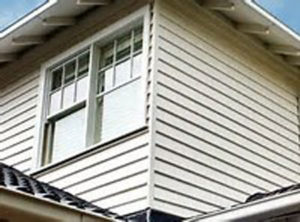
When Do You Need a Building Permit?
If you are doing any structural work on your home you will need a Building Permit. E.g. you must have a Building Permit to remove a load bearing wall. Or build an addition, garage, carport, verandah or deck.
You need a Building Permit if your building work involves:
- Your house structure
- An increase or decrease in your floor area
- An increase or decrease in your house height
- Underpinning or replacing footings
- Removal or alterations to a part of your house that supports another part
- Using building materials that are not (commonly) used for the same purpose
- Safety of the public or occupiers of your house
- Safety of your house
- Projecting beyond your street alignment
Where Do You Get a Building Permit?
Your local Council or a private Building Surveyor can issue Building Permits.
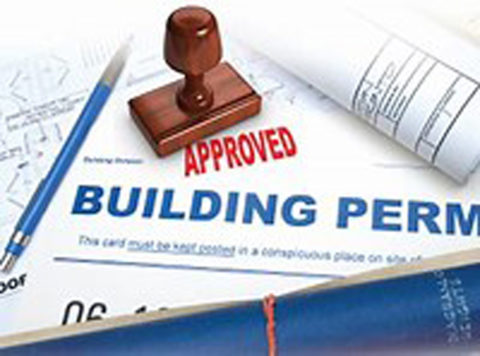
So now you should know how to find out if you need a planning permit or a building permit for your home renovation. You know you can contact your local Council if you want to ask them about your permit requirements. The difference between what is a planning permit and what is a building permit should be more evident. If you have any questions, you can leave a comment in the comment box below.
Gaining planning permit approval can be challenging. It is an excellent idea to work with your local Planner to try and work through the process. It can take six months or more to get your planning permit approval. I’m not exaggerating.
Councils can fast track planning permit approval if you want to make simple changes to your home. You can ask your local town planner if your renovation can go in the fast track planning permit system.
If you are planning to renovate your home you may be interested in reading about our Healthy Homes articles. It covers what you need to know about indoor air quality when renovating. If you have asbestos in your home we have an article on asbestos when renovating covering everything you need to know. And our health and safety risks when renovating covers the risks common with home renovations.
So share your stories and experiences in the comments box below. I’d love to hear from you.
The post All You Need to Know About Permits for Your Renovation appeared first on Bridget Puszka Architect.
]]>The post Indoor Air Quality – What You Need to Know When Renovating appeared first on Bridget Puszka Architect.
]]>Deprecated: Function get_magic_quotes_gpc() is deprecated in /home1/bparchitects/public_html/wp-includes/formatting.php on line 4826
data-elementor-type="post" data-elementor-id="666" class="elementor elementor-666" data-elementor-settings="[]">
It's Your Health. Look after It!
In this post, I’ll be talking about indoor air quality when renovating.
This article is the third in a series of articles on health risks when renovating. In previous articles, I discussed the health risks when renovating with asbestos in your home. And also health and safety risks when renovating.
Research in this area of indoor air quality has been around for decades. Despite this, recognizing formaldehyde as a human carcinogen only took place in 2004.
Why Do I Need to Know About Indoor Air Quality?

The above image is an international pictogram representing chemicals that are sensitising, mutagenic, carcinogenic or toxic to reproduction. Which, in layman’s terms, means a chemical or a mutagen that changes your genetic makeup resulting in producing damaged cells.
You may already know that cancer is when the body’s cells begin to divide without stopping. Usually, the cells are damaged cells. And when these abnormal cells multiply and spread into surrounding tissues, they form the tumours that we know as cancer.
So by taking precautions when renovation, you can avoid some of these mutagens that are known to cause cancer and illness.
In this article, we will look at the indoor quality and what it means to stay fit, well and healthy when you renovate your home.
Your Indoor Air Quality Can Be Worse That Outdoor Pollution!

You might recognize this image as a image of Sydney, Australia. The brown haze is the smog layer. This is what we live and breath in our capital cities.
In Australia, CSIRO is the Commonwealth Scientific and Industrial Research Organization.
CSIRO completed a study on the Indoor air quality in recently built homes. And what they found is astounding. They found that the levels of pollutants indoors were higher than the pollution outside.
The following is a quote from this study. And so that you know, PM10 refers to tiny particles in the air that are smaller than 10 micrometres in size.
In this study, CSIRO found that the ratio of the indoor air pollutants was higher than the pollution outside, in houses recently renovated.
Which means that you can expose yourself to indoor air pollutants as you renovate and in your freshly renovated home. What does this mean to you?
Well, it means that the chemicals, the dust and particles and other contaminants in the air could cause you to have a physical reaction. You may end up with watering eyes.
Or the chemicals in the air could cause you airway and breathing issues like asthma.
You could develop a skin rash.
It doesn’t necessarily mean that you will develop a severe illness such as cancer. It depends on your physical makeup, the exposure and the type of chemicals and your general health and fitness.
What Are the Indoor Air Pollutants?
So when we talk about indoor air quality, it involves indoor air contaminants. Four types of pollutants can contaminate indoor air quality.
They are
1. Chemicals or volatile organic compounds (VOCs)
2. Particles
3. Moulds and bacteria or biological agents
4. Radon or radioactive
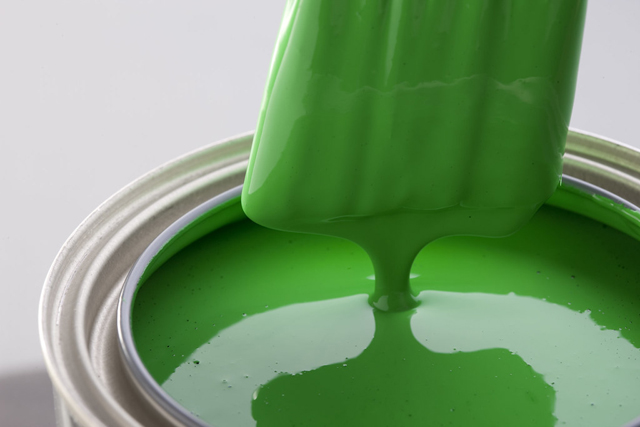
1. Chemicals or Volatile Organic Compounds (VOCs)
Volatile Organic Compounds (VOCs) are chemicals found in many building materials. These VOCs tend to vaporize from a liquid or solid into a gas.
For example, you can find VOCs in the solvents in glues or paint. As the glue hardens or the paints dries, the solvents vaporize to cure the material.
You can sometimes smell VOCs. But not all VOCs have an odour. There can be no sign of the VOC in your indoor air that you can detect. They can be odourless, tasteless and colourless.
A commonly found VOC is formaldehyde. You can find formaldehyde in chipboard and medium density fibreboard (MDF) building materials.

VOCs Can Be Natural Chemicals
You can also find natural chemicals which are VOCs. Terpenes in pine are a natural VOC. You notice the smell of the terpenes in a pine forest. Limonene is another natural VOC that gives the citrus odour to orange and lemon peels.
All the same, these natural VOCs and the human-made VOCs can cause an allergic reaction in people. And cancer, as is in the case of formaldehyde exposure and other chemicals.
It is critical that we use low VOC and zero VOC materials as we make our homes more energy efficient and airtight.
Because as we seal up our homes, we seal up these chemicals and so expose ourselves to higher levels.
So you want to make sure that when renovating your house, you keep it well ventilated. And that you use products such as low VOC paints or no VOC paints.
Use Building Materials with Low or Zero VOCs

That if you use chipboard or MDF, it is formaldehyde free.
Why formaldehyde free? Because formaldehyde is a human carcinogen. And exposure to low doses will irritate your eyes and your airways and your skin.
The type of insulation you use should be formaldehyde free.
If you would like to know more about indoor air pollutants in your indoor air, you can read ‘Is the Indoor Air Quality of Your Home Making You Sick?’
2. Particles and Particulates in Indoor Air

Particulates or particles in indoor air can be from smog, oil smoke, dust, tobacco smoke and the like. The above image shows you what your indoor air can look like in the city. You could and most likely have particles of pollen in your air.
Or there could be particles in the air such as dust from sanding back MDF.
The size of particles is crucial as we can inhale small or tiny particles into our airways.
Because of the size of these particles in the air, they can find their way deep into our lungs.
For this reason, they then have the potential to cause health problems.
The following is from Health NSW:
And the way we absorb chemicals in the air into our bodies is through the particles in the air. The compound fixes to the particulate, and we inhale the particle into our airways.
3. Moulds and Bacteria or Biological Agents
Deprecated: Function get_magic_quotes_gpc() is deprecated in /home1/bparchitects/public_html/wp-includes/formatting.php on line 4826
You could demolish your bathroom wall and find mould on the inside of your walls, like in the video above. Everyone will react to mould spores in some way.
Your indoor air could have bacteria, house dust mite allergens, or viruses. How these biological agents reproduce in your home depends on your indoor air temperature. And the moisture in your air.
They all affect the indoor air quality of your home, particularly when renovating. And they all have a part to play when it comes to your health when renovating.
More reading on what makes a sick building can be found at ‘Ways Your Home Makes You Sick’.
4. Radon or radioactive
Now I want to talk to you about radon. Radon is known as the daughter of uranium. Namely, uranium is the parent element, and when uranium decays it forms radium and radon.
Radon is a radioactive substance that is odourless, colourless and tasteless. And it is deadly. Next, to smoking, it is the second biggest cause of lung cancer in the U.S. They are finding the same results in the U.K. and France.
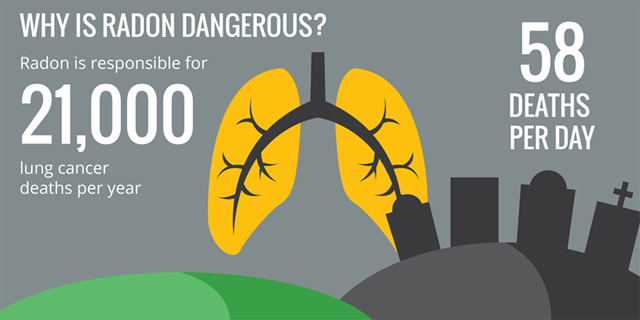
Yes, in the U.S.A. they have worked out that 58 people die every day from radon.
In the U.K., people will sit around at morning tea and chat about the radon levels in their homes over a cup of tea. It is common knowledge.
In Australia, Radon is not a household word. So it should not be surprising if this is the first time you have come across radon in homes.
Radon finds its way through the cracks and fissures in granite beds. It is a naturally occurring radioactive substance.
Radon Occurs Naturally

In Australia we have a natural hotspot for radon at the Paralana hot springs. It is located in Arkaroola, South Australia. Arkaroola is in the northern Flinders rangers of South Australia.
Scientists love this place because only incredible life form lives and survives in these types of conditions. Above you can see a picture of Paralana Hot Springs in all it’s natural beauty.
Apparently, there are no frogs in the area.
At the hot springs, there are high levels of radon. Underground water flows through uranium-rich rocks. Billions of years old, the springs bring radioactive radon and uranium to the surface.
There are times when they recommend that you don’t walk in this area because of the rise in radon levels. These are usually times when there are no winds or breezes, and the heavy, dense radon layer settles and increases in concentration.
And radon doesn’t restrict itself to outback South Australia.
Radon in the Suburbs

The picture above is a view over Berwick, in Melbourne’s south. My client Les wanted me to meet with him on his land site in Berwick.
When we were talking about his land, Les happened to mention that there was 10cm of topsoil on top of a granite bed.
The presence of the granite on his home site meant two things to Les. First, he would have to allow extra for the excavation costs for building into the rock bed. And second, there were high chances that were Les to build his home on a granite bed; this could exposure him to radon.
As we stood on Les’s home site in Berwick, this seemed like a far-fetched idea for Les. Because Les had never heard of radon, I told him that he doesn’t have to take my word for this. He could ring the Australian Radiation Laboratories and ask them what they think.
Consequently, Les did ring the laboratories, and it was hard to say who was the most surprised. The laboratories don’t receive too many calls from the public. But they did say to Les that yes, it is true. That building into a granite bed could expose you to radon.
For this reason, they offered to give Les a radiation tracker to put in his new home, to measure the levels of radon in his home.
Radon in Your Home
In conclusion, yes, radon is real, it’s natural, and it’s deadly.
So radon can get trapped in a house and can cause exposure to you at high levels. If you would want to learn more about this and how to avoid renovation mistakes, you can watch my MasterClass at www.smartrenovators.com.au.
We don’t have a tradition of building basements to our houses like they do in Canada. So it is not so commonplace to find a radon sink in a home, whereas it would be a subject of discussion in the street of downtown Vancouver, for example.
And in the U.S. you can buy radon test kits from hardware stores.
So don’t think it could only happen in the U.S. or Canada.
Here in Australia, the Australian Radiation Protection and Nuclear Safety Agency has surveyed for levels of radon in homes. And they found that approximately one in 1000 homes may have high levels of radon.
Generally, they were homes on concrete slabs with brick walls.
The Australian Radiation Protection Agency states that
Radon is Colourless and Odourless
Because radon is a colourless, odourless gas, the only way to know how much is present in your indoor air is to perform a test.
It is essential that you know that you can do something to make sure that you don’t expose yourself to something as deadly as radon.
You can find out if your house is in a high radon area and you can test for radon.
The Australian Radiation Protection Agency has tested the whole of Australia for radon. You can check to see if your suburb comes up as an area that has recorded high levels of radon on the radon map.
You can buy a radon test kit and check your home for radon levels.
If your home shows up as having high levels of radon, you can fix this problem.
Installing an exhaust sump will pump out the air from the room in your house that has high radon levels.
And you can increase the ventilation in this room. Sealing the cracks and gaps in your foundation will prevent radon from getting into your home in the first place.
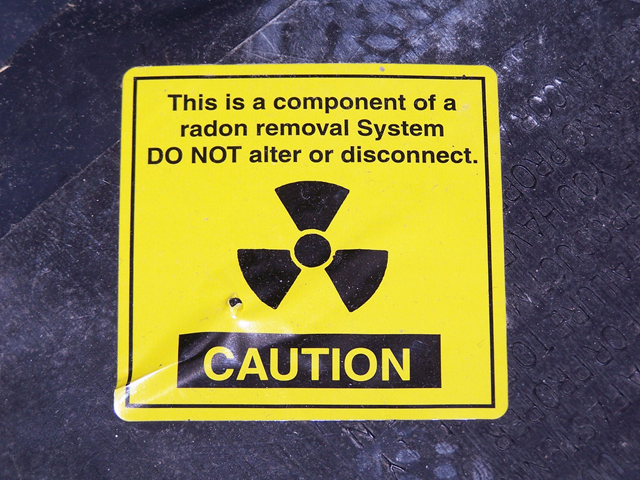
You Can Have a Healthy Home with Good Indoor Air Quality
You can design your home so that it is a healthy home, using materials so that you don’t exposure yourself to human carcinogens within your home. Or suffer from allergies relating to the materials used to build your home.
So let me know what you think about chemicals in your indoor air. Have you heard of Radon before? Will you be taking extra precautions to protect yourself now that you know more about these allergens, mutagens and chemicals.
Have you experienced any health issues yourself relating to your indoor air quality in your home?
And how do you feel about what I’ve talked about in avoiding risking your health in your home renovation?
Is this something you have thought about yourself, or is it new for you? Let me know in the comments below.
So we have looked at three areas of health and your safety in home renovating. Why you should identify asbestos materials in your home and what you can do about asbestos if you have it in your home.
The health and safety measures you should consider in your home renovation.
And now we have discussed your indoor air quality and how it affects you in your home renovation.
Stay safe and healthy in your home and home renovation so that you can look forward to a healthy home with those your love.
Happy Renovating
Bridget Puszka
Bridget Puszka designs beautiful, healthy, sustainable luxury homes. You can find out more about her architect designed Award-winning houses.
And learn what her clients have said about their homes in their testimonials.
The post Indoor Air Quality – What You Need to Know When Renovating appeared first on Bridget Puszka Architect.
]]>The post Health and Safety Risks When Renovating appeared first on Bridget Puszka Architect.
]]>Deprecated: Function get_magic_quotes_gpc() is deprecated in /home1/bparchitects/public_html/wp-includes/formatting.php on line 4826
data-elementor-type="post" data-elementor-id="585" class="elementor elementor-585" data-elementor-settings="[]">
Surviving Your Home Renovation.
Accidents Happen
When it comes to your risks when renovating, you often think about budget blowouts.
To begin with, you could spend too much money on your house so when you go to sell your home you don’t get your money back.
Also, the value of your home could go down in price. So you spend all this money on renovating, and your home is worth much less than when you started. Now that’s a risk.
Well, yes, they are all risks. Risks to do with finances, and we will talk about these risks when renovating in another article.
Health and Safety Risks When Renovating
The risk we are looking at in this article is the risk of your health, which is more important than the financial risk. Why? Well, you need your health to earn your money so that you can pay for your renovation in the first place. And you need your health so that you can add to your finances for years to come.
Besides your earning capacity, you want to stay as injury free as you can for a happy, healthy life. So that you can spend your time with those you love and look forward to a beautiful joy-filled life. That is what I am talking about here.
We have spoken about asbestos risks when renovating in my first post. In this article, we will be looking at your health and safety when renovating. And how to keep yourself healthy and safe to enjoy your home for years to come.
We have all heard about people injuring themselves on a building site. Let’s not be one of them.
What Could Possibly Go Wrong in a Home Renovation?
Deprecated: Function get_magic_quotes_gpc() is deprecated in /home1/bparchitects/public_html/wp-includes/formatting.php on line 4826
So when it comes to health and safety in home renovations, several situations come to mind, such as falling off a ladder. If you have ever fallen off a ladder, as I have, you know how quickly and easily it can happen.
All the same, as you watch this video, you can feel their pain. However funny you might find these ladder associated mistakes, you know that it would be better not to be the one falling. You have to live with the consequences. Warning, there is a bit of swearing going on in this video, before and after a fall.
And you know that you shouldn’t laugh. Safework Australia report that on average, 12% of workers die each year from falling from a height.
Alternatively, something can fall on you, such as a brick. To get a visual of what this would look like you can tune into the video below.
Deprecated: Function get_magic_quotes_gpc() is deprecated in /home1/bparchitects/public_html/wp-includes/formatting.php on line 4826
Again, not that funny when you consider that 10% of workers die by being hit by falling objects. It shouldn’t be happening.
Electric Shock Risks When Renovating
You could trip over a power cord when renovating. Not only embarrassing, but it can also hurt. You don’t want to develop industrial deafness from loud power tools. Or get an electrical shock.
Worse things can happen than what happens in the video below. Worksafe Australia reports that on average 4% of workers die from contact with electricity.
Deprecated: Function get_magic_quotes_gpc() is deprecated in /home1/bparchitects/public_html/wp-includes/formatting.php on line 4826
Exposure to Dust and Chemicals When Renovating
You can expose yourself to a cocktail of dust and chemicals when renovating.
The list goes on for the different ways you can injure yourself when renovating.
You get the idea. Accidents can happen and do happen. So you try and make your home renovation as safe a building site as you can.
You Can Expect These Risks When Renovating
Ellie Collier writes about Ten Common Construction Site Hazards, in her article as:
1. Working at height.
2. Moving objects.
3. Slips, trips, and falls.
4. Noise.
5. Hand-arm vibration syndrome.
6. Material and manual handling.
7. Collapsing trenches.
8. Asbestos.
9. Electricity.
10. Airborne fibres and materials.
If you are going to be doing hands-on work, you want to take care of yourself. And also make sure that the tradesmen that work on your home are also being safe in their work practices.
Before you get up a ladder, make sure that it is secure. Invest in an excellent ladder. Make sure that the chimney will not fall on you if you are demolishing it. Buy all the safety equipment you need to keep yourself safe.
Secure all electrical cords and make sure they are safe.
Dress for Safety

Do the right thing by yourself and wear safety protection equipment. Protect your body, feet, head, your eyes and your ears.
When you are in a dusty situation, wear a mask to protect your airways. Or if chemicals are in the air, make sure you have the right airway protection for this situation. Protect your eyes and ears. You don’t want to damage any part of your person.
All of this is nothing new. The big step is to do it.
Accidents do happen.
Think safety first.

So you know the message in this article. In short, prevention is better than cure.
Well, I’d love for you to add to the conversation. Leave a comment in the box below. Have you had any close calls where your safety equipment has done its job? What will you do to make your home renovation a safe construction site? Do you have any stories of your own that you want to share?
So thank you for taking the time to read this article. However dry a subject, health and safety are essential. And that is the message you take away from this discussion.
Above all, your health and your safety are critical.
You can read more on this topic of staying healthy when renovating in my article on asbestos. Yes, you will learn something you didn’t know about asbestos.
The final blog piece on health risks when renovating is coming up next. Read how Indoor air quality in your home can affect your health.
Happy Renovating!
Bridget Puszka
Smartrenovators.com.au
Bridget Puszka designs beautiful, healthy, sustainable luxury homes. You can find out more about her architect designed Award-winning houses.
And learn what her clients have said about their homes in their testimonials.
The post Health and Safety Risks When Renovating appeared first on Bridget Puszka Architect.
]]>The post Asbestos When Renovating What You Need to Know appeared first on Bridget Puszka Architect.
]]>Deprecated: Function get_magic_quotes_gpc() is deprecated in /home1/bparchitects/public_html/wp-includes/formatting.php on line 4826
data-elementor-type="post" data-elementor-id="505" class="elementor elementor-505" data-elementor-settings="[]">
Asbestos Is a Killer. Don't Risk Your Health When You Renovate
Finding asbestos when renovating can be alarming. Asbestos is not the only risk to your health in your home.
There are areas of health and safety you want to have checked off before you renovate. For example, how your indoor air quality can affect your health for years to come.
We want you to stay healthy so that you can enjoy your renovated home for years to come.
This article is the first of three on staying healthy when renovating.
We all know that asbestos is terrible and will cause cancer. In this article I’ll be looking at asbestos when renovating and why you need to know about asbestos. What you look for to know if you have asbestos building materials in your home. Furthermore, how you can manage these asbestos materials when renovating.
The last thing you want to do is start demolishing your home, ripping out walls, roofing and flooring materials. Without first checking if any of these are asbestos building materials. As it will be the cause for you and your family to develop cancer in 40 years.

Asbestos When Renovating
So, you own your house, and you are thinking to yourself that you want to renovate. You want to update your home so that it is a better living environment.
As well as that, you want to have more of a connection to your garden and your back yard. In addition, you want to get rid of all the clutter that fills your home. Apart from this, and most of all, you want a beautiful home.
You may already suffer from hay fever or allergies. And you could suspect that somewhere in your house there is something that is causing them. And your partner might not be suffering at all, which doesn’t help your cause to make your home allergy free.
The first word that your partner says about renovating is ‘budget’. And the second is ‘cost’. That is, keeping the cost of renovating down is the most important thing, even before you start.
Well, I would say that there are more important things to keep in mind when it comes to your home renovation.
And at the top of the list is your health. Next on the list, as a close second, is your family, shortly followed by the type of home you and your family want for your home life.
I’m not saying that managing the cost of your home renovation is not essential. It is.
But we all take our health for granted. That is until it is not there anymore.
And then we would pay anything to have it back.
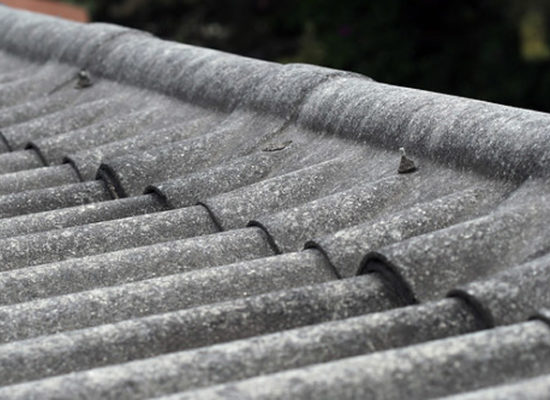
Risking It All When You Renovate
So let’s look at the home renovation mistake of risking your health. And what you should be aware of that can harm your health; both in the short term and the longer term.
When you think of health and buildings, asbestos is not far from that correlation. The heading for the article ‘This house killed me ‘says it all. Written by the investigative journalist Mario Christodoulou, and published in The Sydney Morning Herald.
Christodoulou talks about young people renovating their homes. Where money is tight, and you D.I.Y. your home renovation. Sounds familiar?
He goes on to talk about the ‘third wave’ of asbestos-related disease. This ‘third wave’ is coming from D.I.Y. home renovators — people who exposed themselves to asbestos when renovating. People like you and me.
He states that six out of every ten people with mesothelioma had exposure to asbestos when renovating.
You could say to yourself that would only happen to someone else. Not me. Well, that like putting your head in the sand and leaving it there.
Dr Moon from the Australian Institute of Health and Welfare said that,
Remove Asbestos with Reputable Asbestos Removalist
So don’t become a statistic.
You are renovating your home so that you can enjoy it for years to come.
If you find you have asbestos when, have it removed by a reputable asbestos removalist. And when you are having the asbestos removed, don’t stay in your house. During asbestos removal, this is when exposure to asbestos fibres is high.
My brother asked me about a house clad in an asbestos sheet that he was thinking of buying. He asked me what I thought. And after a brief silence from my end, he said: “I know what you are going to say”.
So I told him that in the U.K. they removed asbestos from school buildings. After they removed the asbestos, the levels of asbestos fibres in the air were measured to be much higher.
And external asbestos cladding will weather. This weathering of the asbestos sheet will make the exterior cladding friable. Which will result in fibres of asbestos breaking from the asbestos cladding and over time expose you to asbestos.
Why Is Asbestos so Lethal
Nobody knows how much asbestos exposure will cause asbestos-related diseases. Who would want to find this out?
When I studied for my Masters in Science: Architecture in the UK, we met with an asbestos expert. The expert brought in some asbestos building material. It was triple bagged in sealed plastic. And the person who knew best what this material could do held this bag at arm’s length from his person.

Asbestos fibres are fine tiny and sharp fibres. That will find their way into your airways. You can end up with asbestos fibres in the air sacs of your lungs, and the membranes around your lungs.
So why start with a house that you know has asbestos? If you want a safe home for your family?
So the choice is yours to make. But you know that the risk of exposure to asbestos is a considerable risk. Not only to yourself but your family and occupants of your home.
That mesothelioma won’t come knocking on your door tomorrow. But it may in 40 years when you are ready to enjoy your time with your grandchildren. And the life you have worked hard.
Why Should You Care About Asbestos?
You have to assume that your home will have asbestos if built before 1970.
And your home is likely to have asbestos if built before the mid-1980s
Why assume this? The lung foundation states
What Should You Do If You Find Asbestos When Renovating?
Removing asbestos products is not a D.I.Y. job. First, you have to assess whether it is better to leave the asbestos where it is or should you remove it. If the asbestos is not exposed to the weather, there is no damage to the sheet or material, and there are no loose fibres it may be best to leave it in place.
But it is a poor false economy if you do remove asbestos yourself. You will want to invest in a professional asbestos removalist to remove the products. Why? For yourself, that’s why.
Removal of asbestos material more than 10 square metres must be done by a licensed person. You can find an accredited asbestos removalist through the Asbestos Removal Contractors Association.
Where Do I Look for Asbestos when Renovating?
If you want to find out where in your home there may have asbestos, you can download the Health house Checklist. This checklist identifies areas of a house that may contain asbestos materials.
If you want to find out more about asbestos, you can download the Asbestos Guide. A Guide for householders from the Australian Government Department of Health.
So yes, finding asbestos when renovating can be alarming. Have you found asbestos in your home? What did you do? Let me know your experience with your home in the comments below. You are not alone if you do have asbestos in your home. Two out of three homes in Australia built between 1939 and 1985 have asbestos. Does this not surprise you!
So whether your home is in the suburbs or a beach shack like the one below, identify the asbestos sheet and work out how you can safely remove it.

Stay Healthy When Renovating
So you’ve heard the message in this article. Stay healthy and take precautions when handling asbestos when renovating. Well, what do you think? Is any of this news to you? Leave a comment in the box below. Has this shone a new light on asbestos? Or have you heard all of this before? Will it change how you look at your home and plan your home renovation? I would love to know what you think.
So thank you for taking the time to read my blog. And for taking time for yourself to plan your home renovation so that you don’t exposure yourself or your family to asbestos. If you are interested to know more about healthy renovations you can read the next blog post on Renovating and Health and Safety. This is the second article of three on staying healthy when renovating.
Happy Renovating!
Bridget Puszka
Smartrenovators.com.au
Bridget Puszka designs beautiful, healthy, sustainable luxury homes. You can find out more about her architect designed Award-winning houses.
And learn what her clients have said about their homes in their testimonials.
The post Asbestos When Renovating What You Need to Know appeared first on Bridget Puszka Architect.
]]>